 5
5

(Image courtesy of Ann Gibson at Canyon Creek Elementary School)
It is the nature of pattern to delight the eye, and since the dawn of time, we as humans have been surrounded by pattern, whether natural or man-made.
Woven baskets, decorative pottery, architecture, sumptuous textiles, and intricate wood carvings are all means in which artists have included pattern to captivate the viewer's attention.

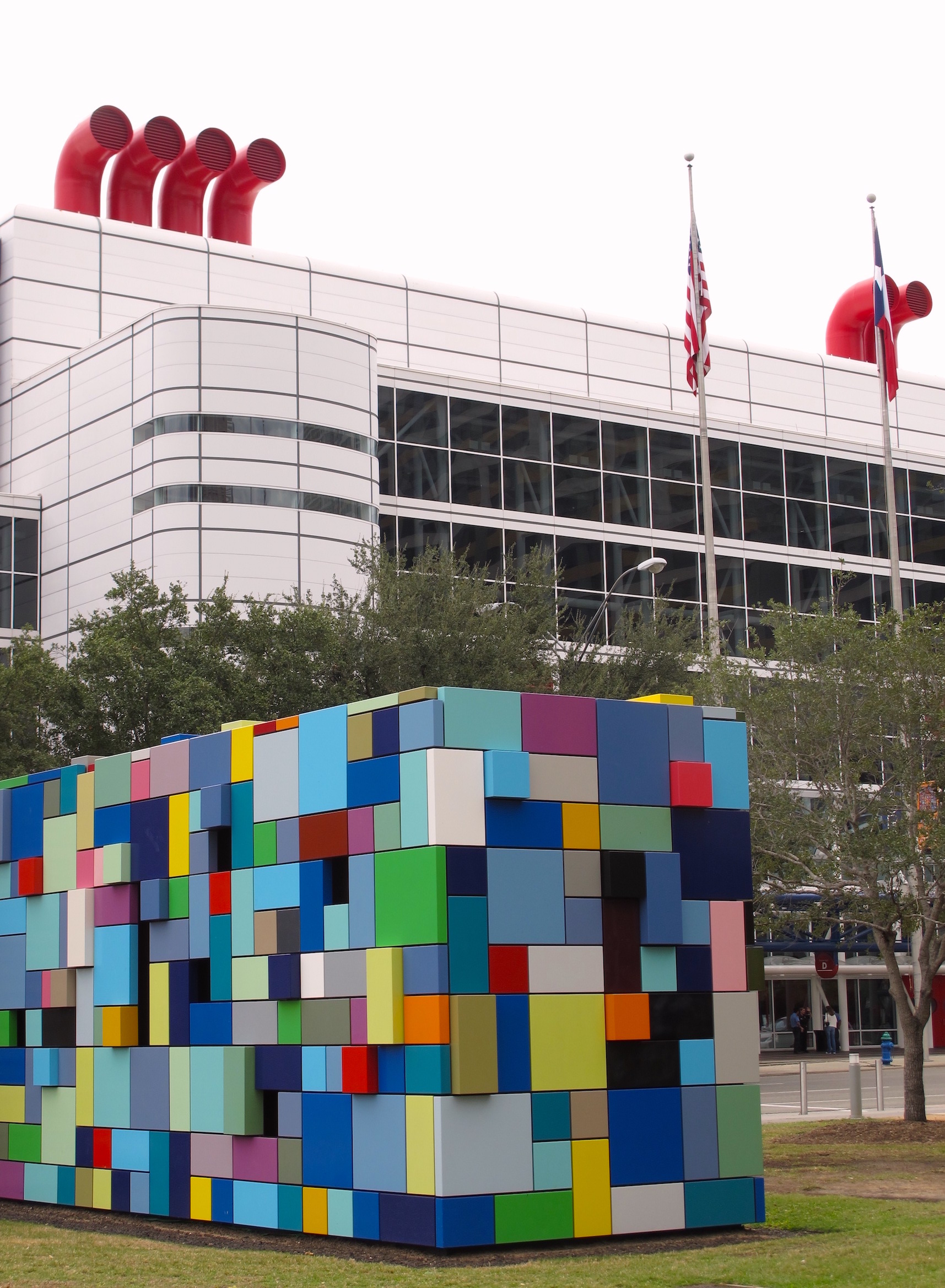
Take these two beautiful buildings: Ecology of Colour (on the left), Dartford, Kent, UK and Synchronicity of Color: Blue in Houston, Texas by Margo Sawyer. If you were strolling through the park, how could you not stop to admire either of these buildings? Would you try to count the number of block patterns and colors used in each design? Would you take a few photos as a memento? Well, both of the building's designs and patterns were successful in capturing your attention.
As a quilt designer, you have the opportunity to grab the viewer's attention by using pattern to its full advantage. Pattern is the combining of elements or motif in an arranged and repeated manner. Carol Ann Waugh's series Conversations: Years quilts are a visual time stamp of world headlines during pivotal years in her life. The quilts are personal, visually stunning, while at the same time being a fun game of 'do you remember' when? At first glance the quilt (Conversations Years: 1959) appears to be laid out in a simple, but orderly circle in a square pattern. Look at it for a while longer, and you see that there's a lot more going on. 280 light purple circles and an analagous color range of squares provide the background, while colorful words and numbers pull your eyes around the quilt. This is pattern and repetition using a simple motif with impressive and memorable results.

Types of pattern include:
Spheres
Meandering
Lattice
Spirals
Waves
Mosaic
Geometric Shapes
Conversation Years: 1959 by Carol Ann Waugh (Show 1011). [Image courtesy of Carol Ann Waugh]
Let's look at some other quilts featuring pattern:

Spin Cycle by Valli Schiller. (Image by Road2CA)

Summertime by Elsie Campbell (Show 407). [Image Road2CA].
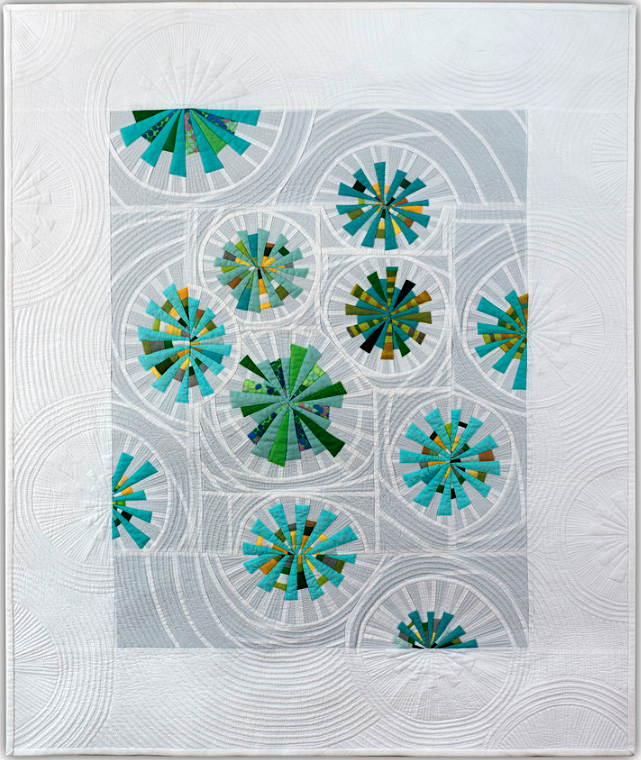
Burst by Marge Tucker. (Image QuiltCon).
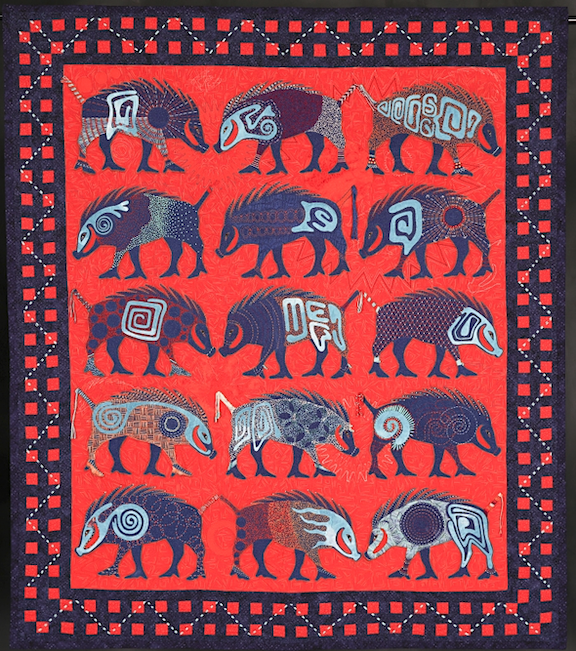
15 Warthogs by Marilyn Smith (Image by TheQuiltShow.com)
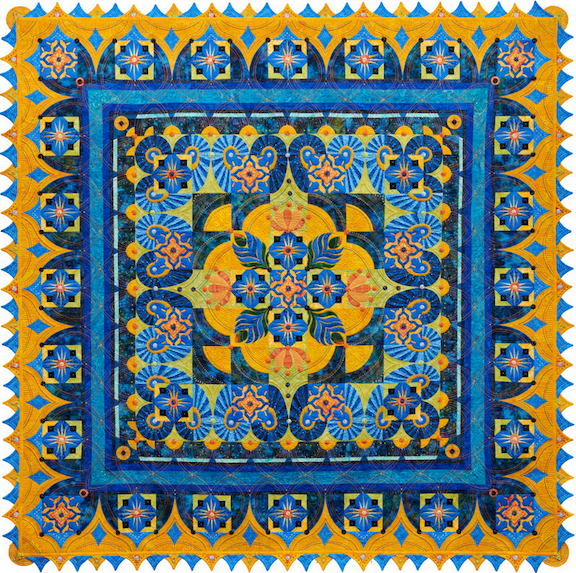
Midnight In Morocco by Marilyn Badger. (Image by TheQuiltShow.com)
Alaskan quilt artist Maria Shell (Show 2208) shares how she uses basic shapes to create visually interesting quits featuring pattern.
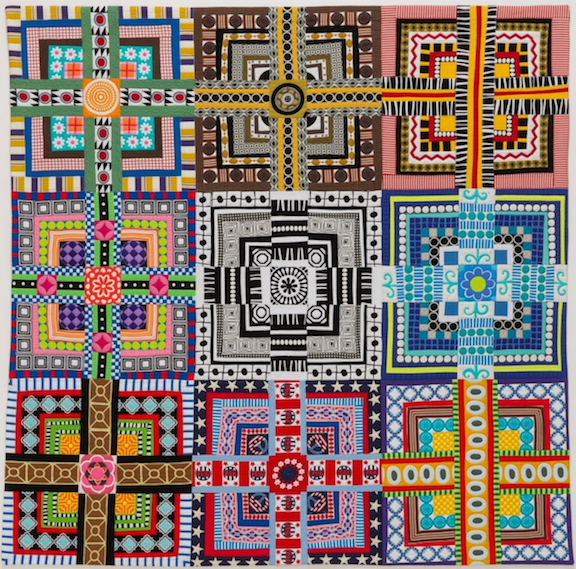
What is pattern? And how can we use this design element to create dynamic patchwork? Pattern, also called repetition, is repeating visual elements such as line, color, shape, texture, and value to unify the total effect of a work of art, a quilt, or a composition. It is one of the many “glues” I use to hold my quilts together.
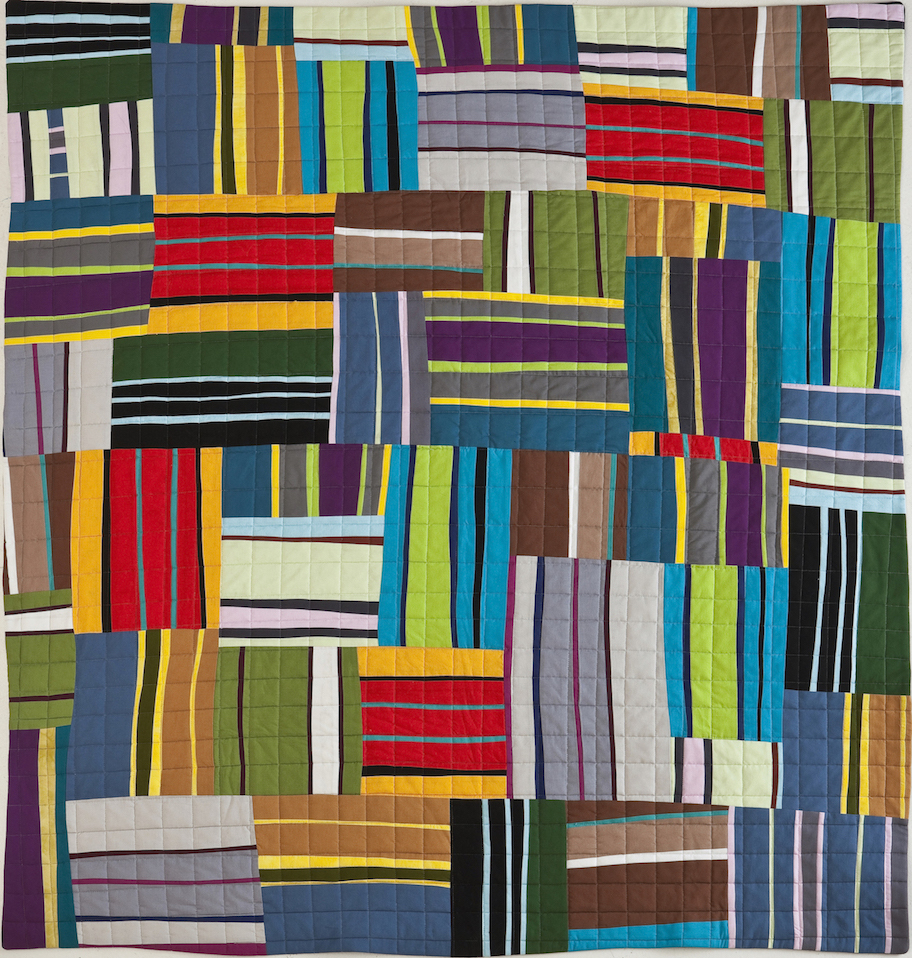
Pattern & Line
The easiest way to create pattern is with line. Every time you make a strip set for a traditional quilt you are manipulating line. Good Vibrations is a classic example of improvision-ally cut strip sets cut into blocks that are then arranged in a pleasing manner.

You can even introduce patterning into your lines if you like. In the quilt Birch Stand, I used bits and pieces within a monochromatic color scheme to create lines that I then pieced onto a neutral background. The pieced lines float on the neutral surface producing a simple but interesting exploration of line and pattern.
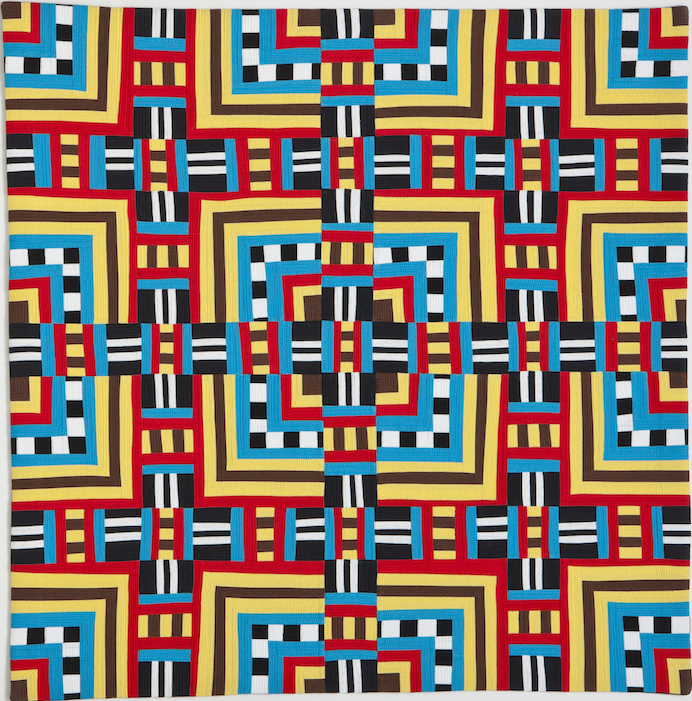
Once you get the hang of that, you can then manipulate the lines (pieced or not) into larger shapes as I have done here in Aztecian. Aztecian features a controled palette of hi-contrast colors pieced into repeating lines. The lines change directions creating movement and interest in the quilt.
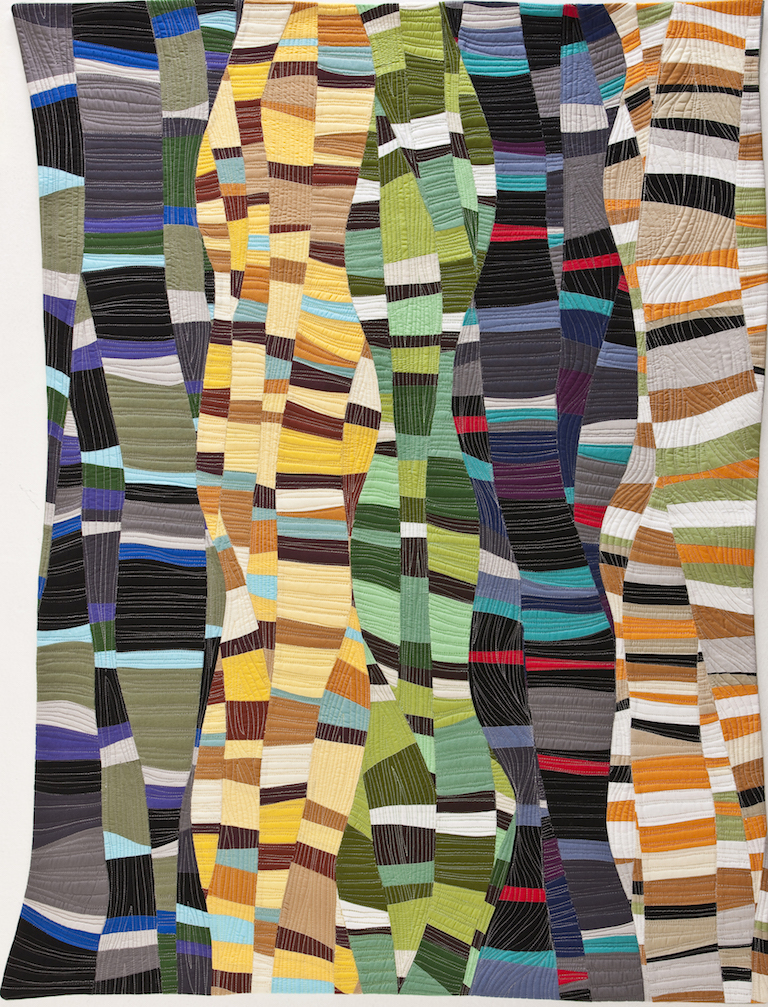
Pattern & Color
Frequently the first step for me in designing a new quilt is building a palette. I will select 8 -12 colors that I find dynamic, beautiful, and bold. By bold, I mean that the colors never truly blend, but instead they each compete equally for attention—they hold their own. In Do a Little Dance, I have created five palettes that have been built into curvy lines. Each palette is used in the same way to create pattern and repetition, but they also look wildly different when placed next to each other. To create dynamic quilt palettes where each color holds its own—use a value finder and the grey scale function on your camera to double check against what your naked eye sees. If everything blends together in grey scale that means you do not have enough variation in your colors and values. Change them up! Dare yourself to create combinations that are fresh and unpredictable. That is where the action is at.
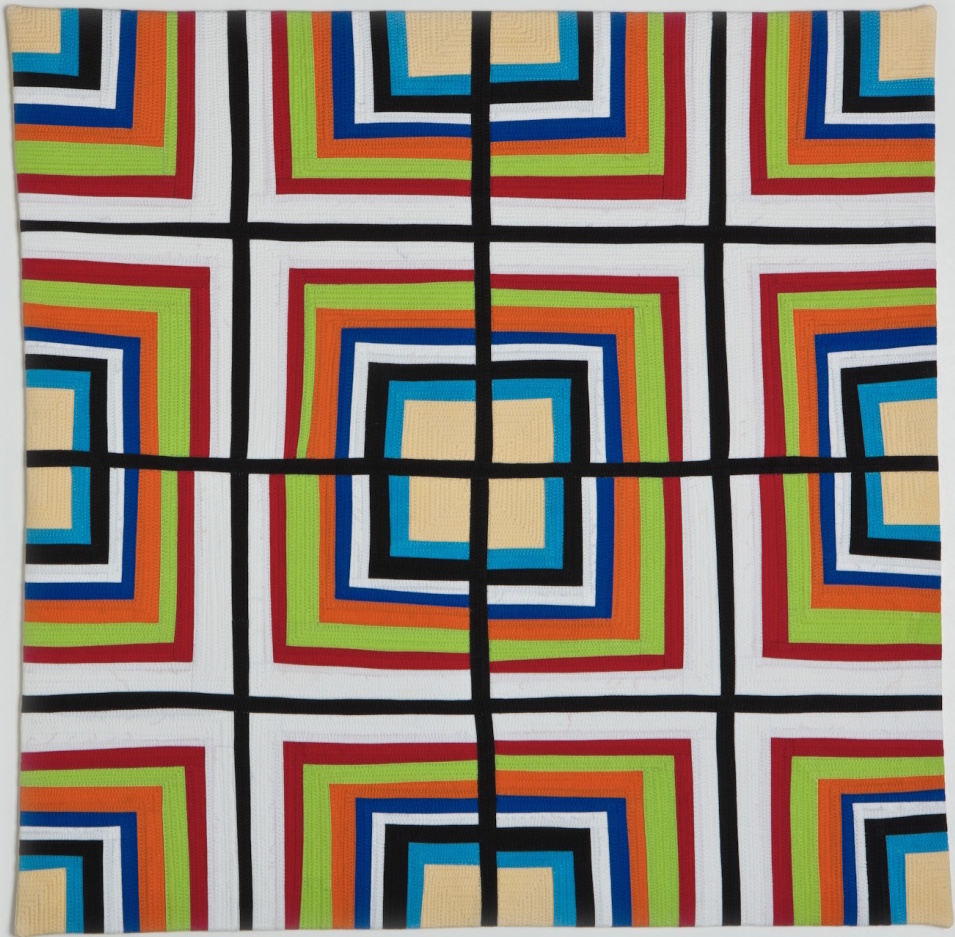
Another way to create pattern with color is to place that color in the same place in the quilt over and over again so that the color holds its own within the composition and becomes part of the lines and shapes that are building the quilt. I have used bold colors on white to create pattern with color in the quilt Day.
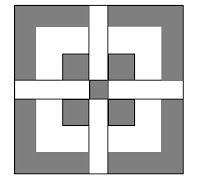
Pattern & Shape
Introducing pattern into shape can have dramatic results. By this I mean, you can take a shape and fill it with pattern. All traditional quilt blocks are built out of shapes. The Crossed Square quilt block is a perfect example. It is composed of linear shapes arranged in a pattern.

But if you take those shapes and add pattern to them, you will find that you are onto something. Boulevard is composed of dozens of different linear shapes to create a single elongated Crossed Square quilt block.

Pattern & Texture
Texture is in many ways pattern getting small enough to create the illusion of a dimensional surface. I created three color palettes and selected a particular shape or line to create the textural elements of Root Glacier. The sun is composed of flying geese blocks in a pleasing sun palette. The glacier is built from curvy lines moving in different directions, and the sky is that same curvy line moving horizontally across the top of the quilt. The textures created by the piecework serve the quilt and make it more interesting.
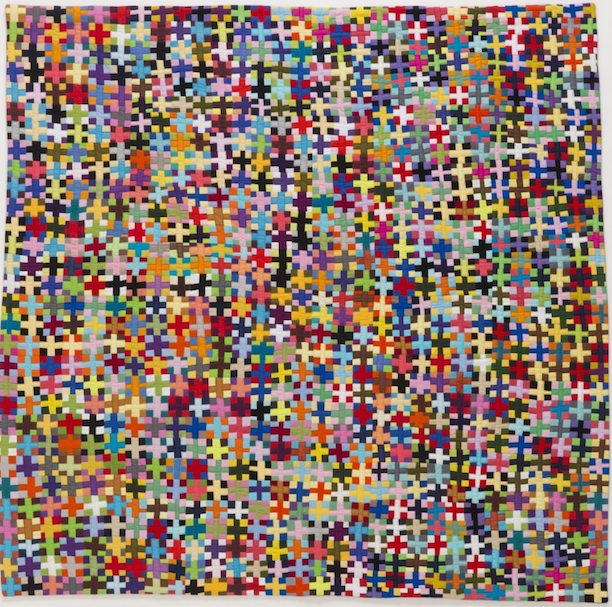
You can also create an overall texture to create visual interest. To Agnes Martin, with Color repeats the same shape (which is that simple Crossed Square block I was talking about earlier) in the form of uber-tiny quilt blocks. It is texture as pattern and art.

Pattern & Value
Value is the darkness or lightness of a color or hue. I frequently use high contrasting values to create visual interest in my quilts. Treasure Map uses all of the colors of the color wheel in varying values to create high contrast visual interest.
I hope these pointers about how I use pattern will help you create dynamic quilts.

Template 1 Template 2 Template 3
Practice Exercise: Creating Pattern with Repetition
Click Here to Download the pattern templates (triangle in a square, circle in a square, square in a square).
-
Use the provided templates to make individual units (either a single block or a combination of two blocks) using colored pencils, colored paper, graph paper, fabric, etc. For the best visual results, you will need at least 30 or more blocks.
-
Arrange and move the blocks about (pinning to a design wall is a good idea) to find a combination that suits you.
-
Take a photo of combinations with your phone to make comparing easy.
Click here for more topics related to The Art of Quilt Design program
























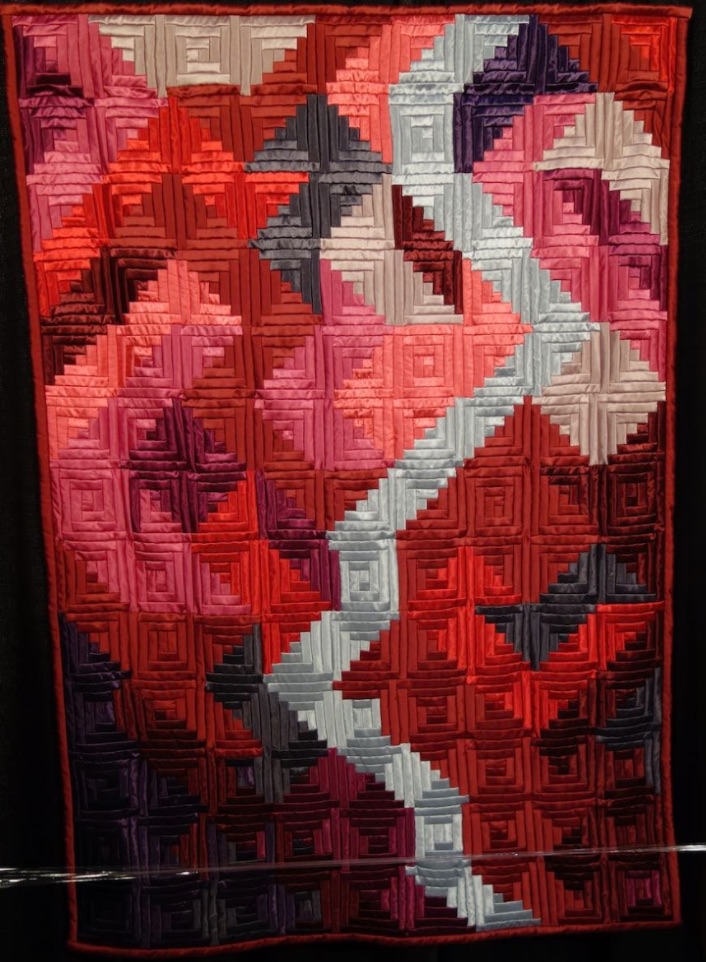

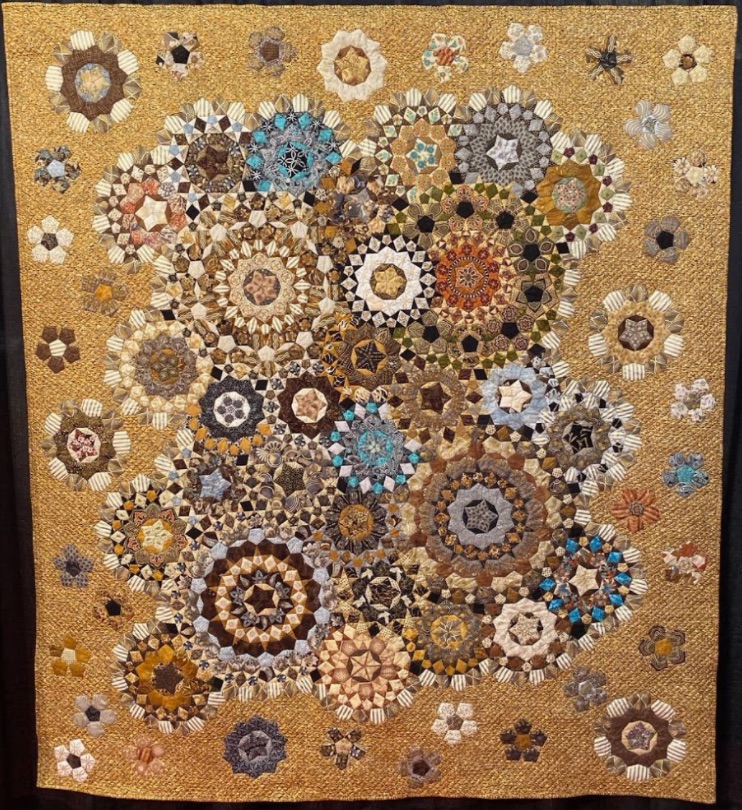
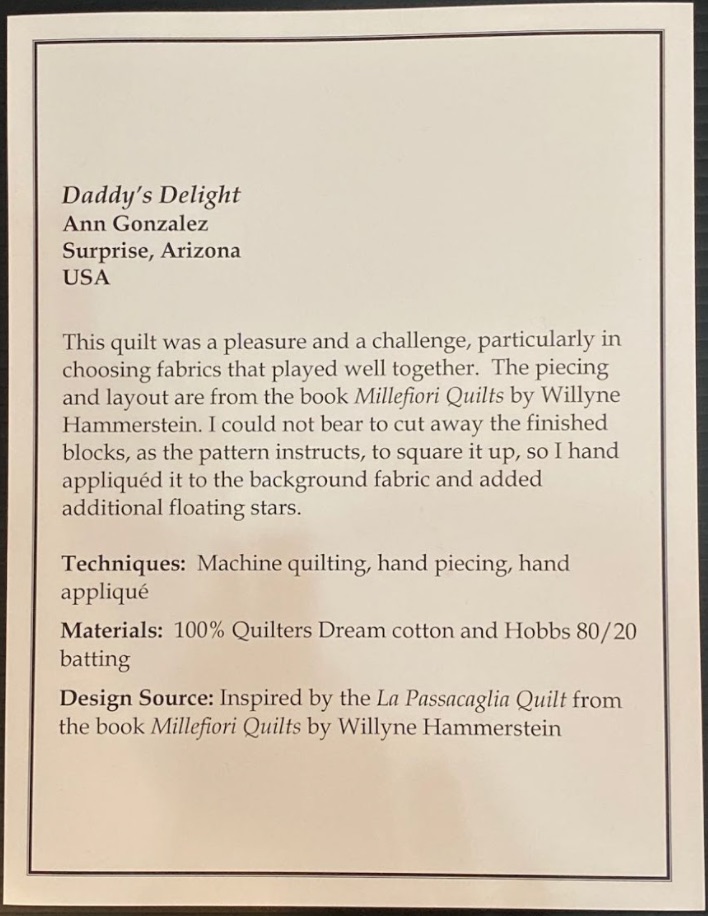
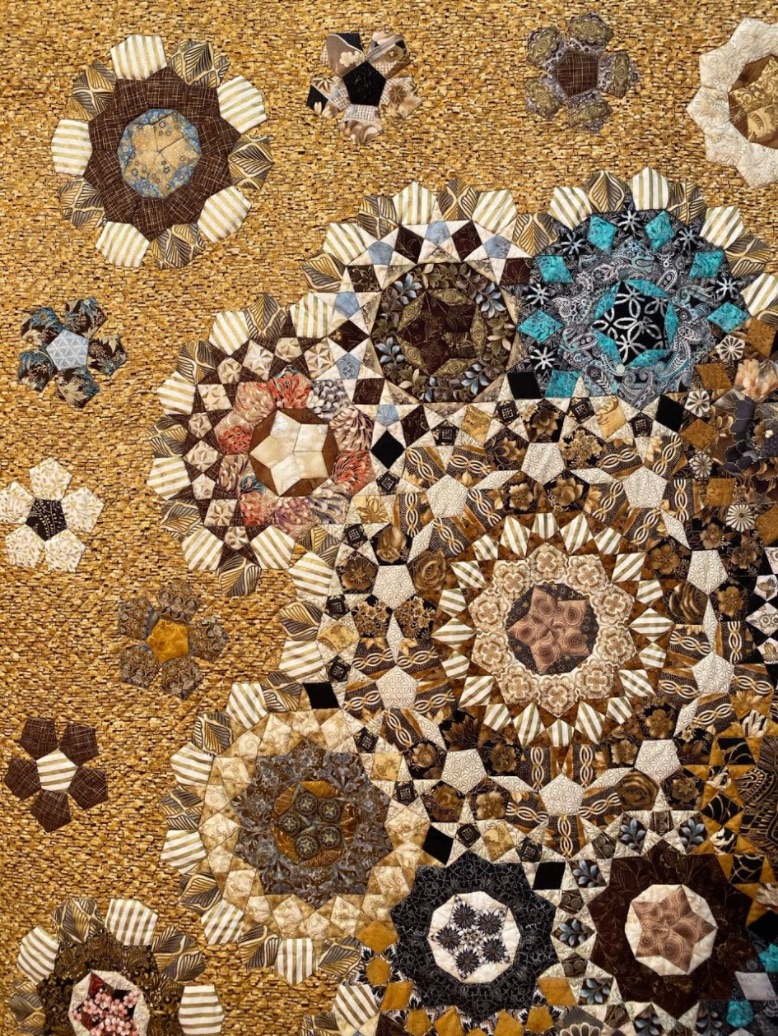
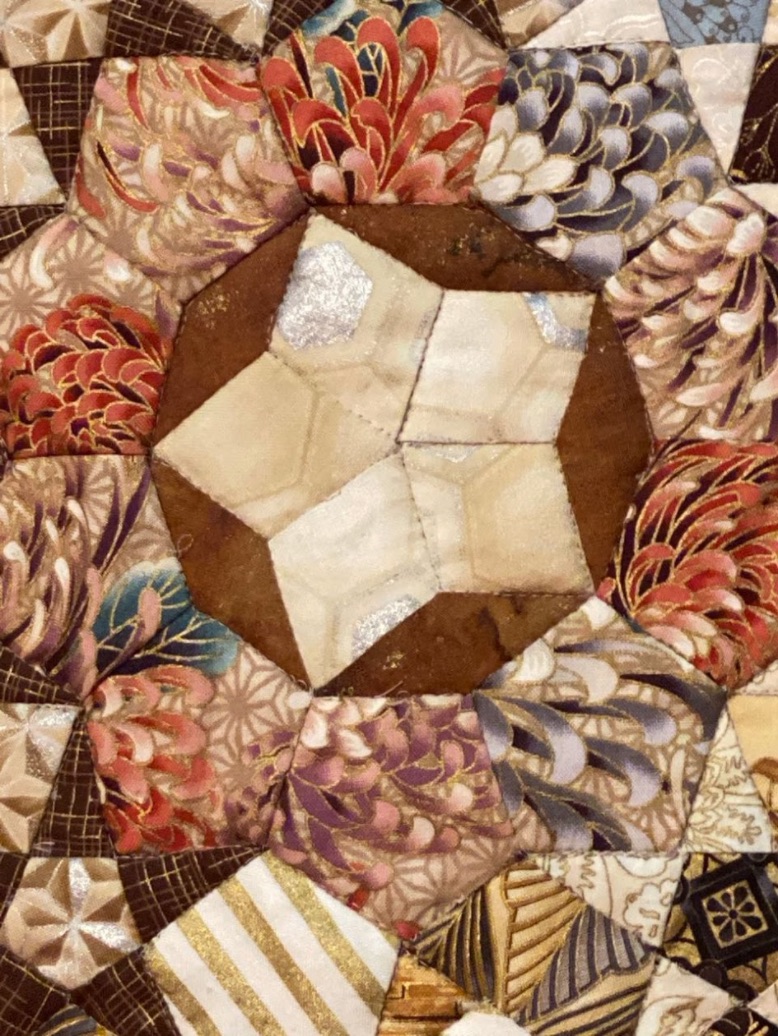
 A special, hand-crafted quilt has gone missing. Made for Lt. Col. Cynthia Weidman, it depicts Weidman's 24 years of service and is a fabric reminder of traveling the world and helping others. They are asking for everyone's help to find the quilt.
A special, hand-crafted quilt has gone missing. Made for Lt. Col. Cynthia Weidman, it depicts Weidman's 24 years of service and is a fabric reminder of traveling the world and helping others. They are asking for everyone's help to find the quilt.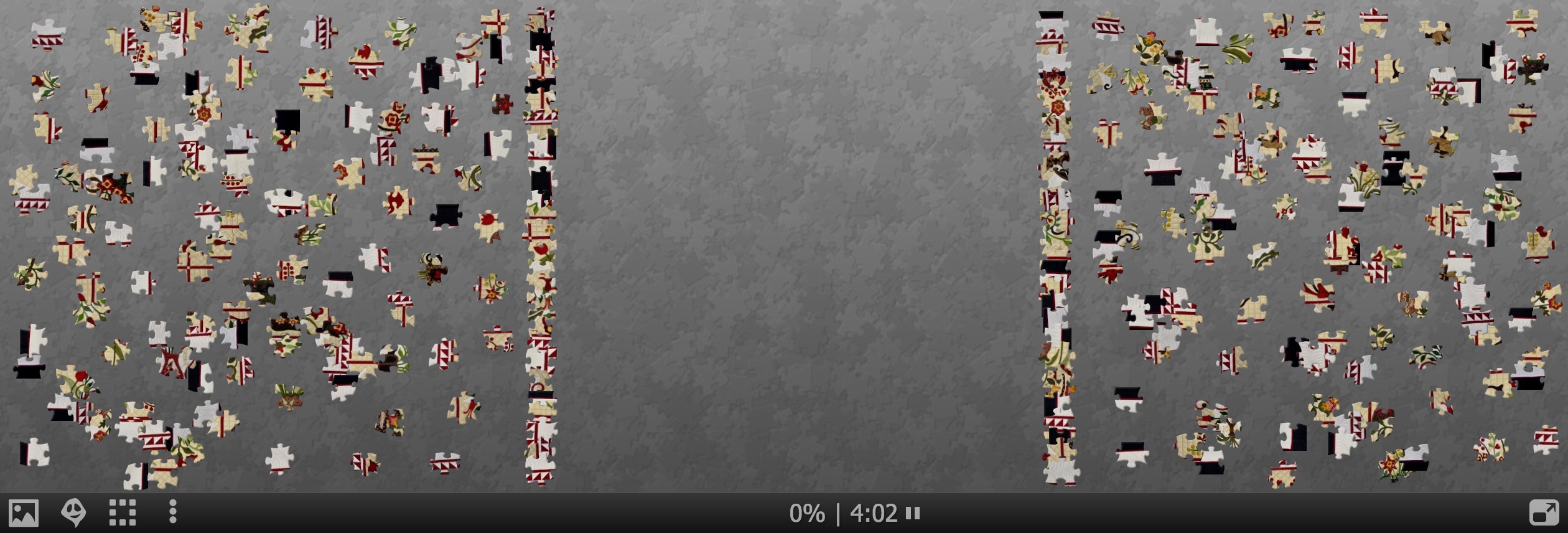
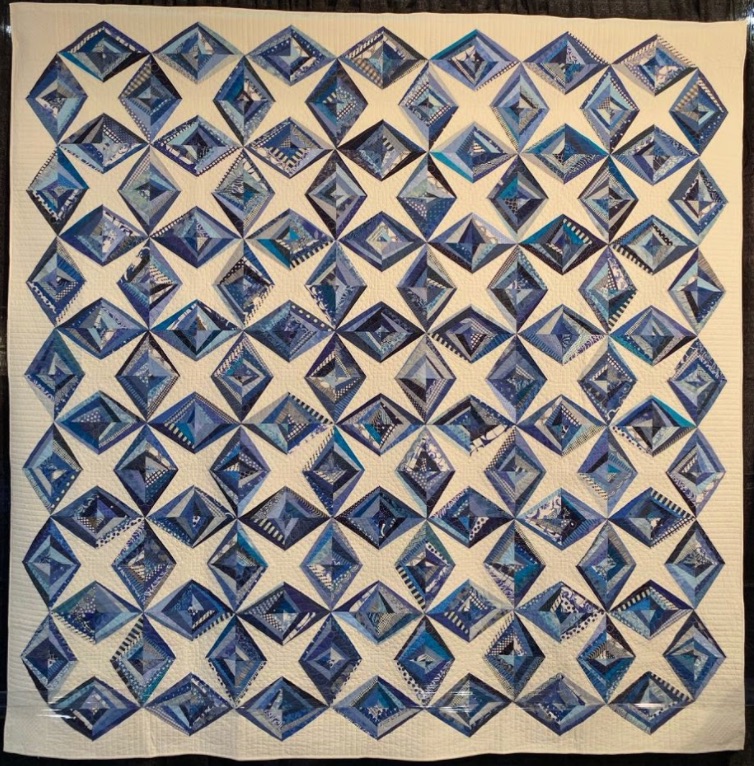
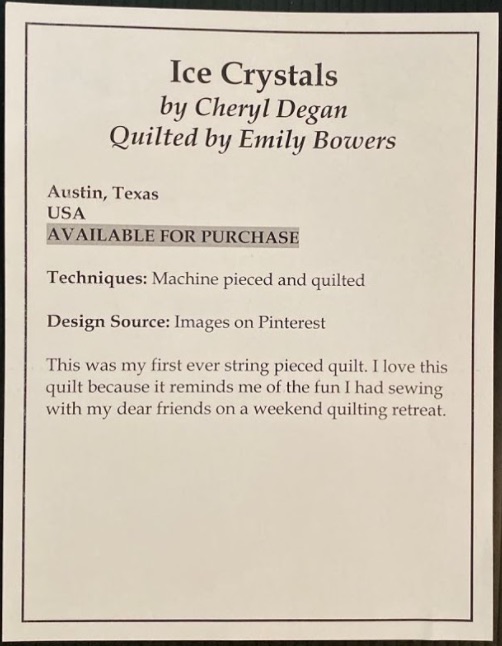


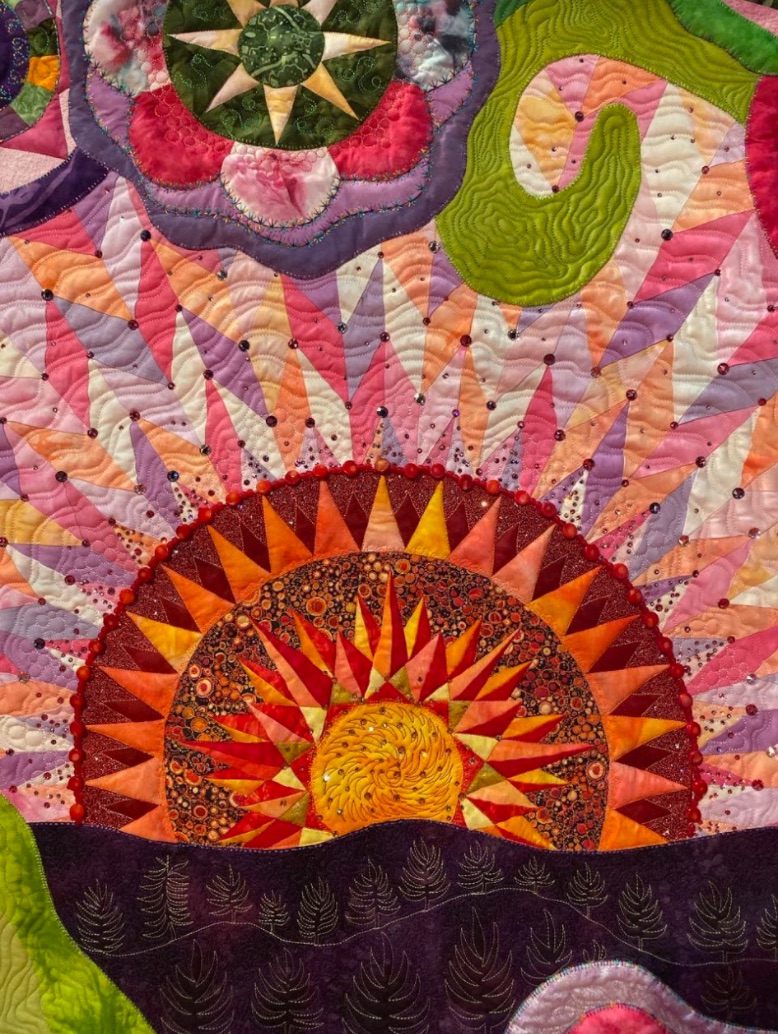




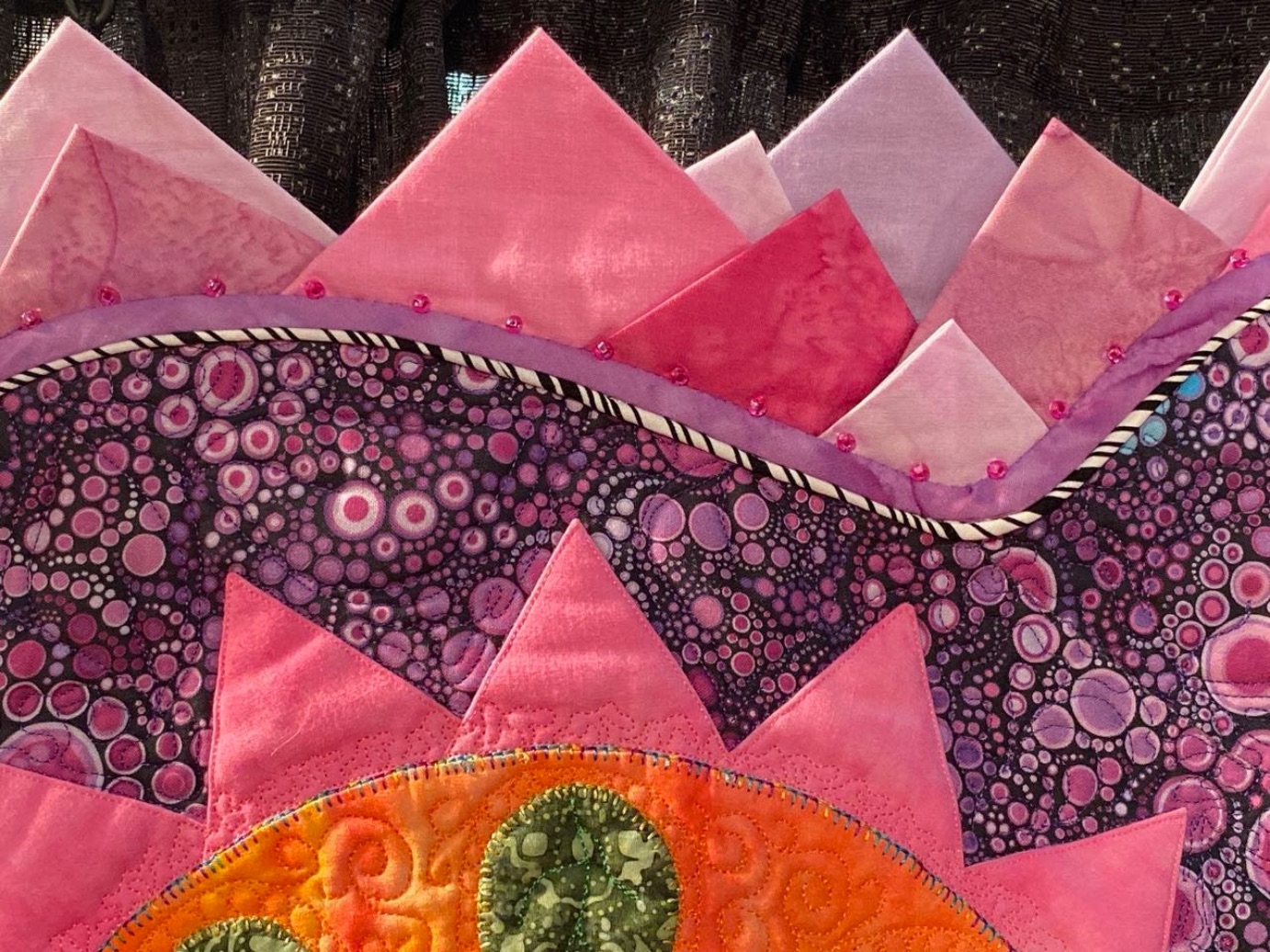


.jpg)


